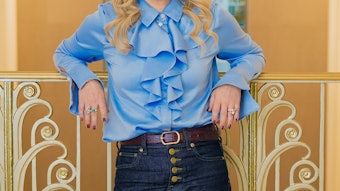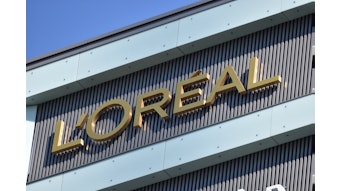Whether the aroma of a particular cologne or of a beloved dish from childhood, scent—more significantly than any of the other senses—is capable of bringing memories sharply back into focus. Brands are acting on this principle when packaging and marketing both existing and new products.
More than ever before, marketing and design trends in the bath and body industry are pointing to scent as the most underutilized brand equity for capturing consumers’ often fickle purchasing fancy. According to Quest International, an international corporation specializing in the creation of flavors and fragrances, “Fragrance, as an emotional sense, is a key way for brands to convey real meaning as well as functional benefit to users.”
Current challenges with scent are twofold: integrating scent into a brand design can be an arduous process; and once a product has incorporated its signature scent, the challenge is to deliver that scent experience in a unique and pleasurable way.
In our caseload, we have found that creating a scent that is inextricably linked to a brand has become increasingly important, as products in the bath and body industry continue to multiply and diversify. “A brand scent can significantly enhance people’s perceptions and experiences of a brand,” said Alex Moskvin of International Flavors & Fragrances (IFF).
Ensuring that a brand scent is well-matched to the target consumer is a large part of a creative process that goes beyond capitalizing on the established aromatherapy qualities of individual ingredients. In general, the younger the target consumer, the sweeter the scent. Young girls and tweens prefer sweet, strong scents—such as berries, bubble gum and various desserts—as evidenced by Jacqua Girls’ Ho Ho Hot Marshmallow and Cocoa, a 2-in-1 body wash and bubble bath (U.S.), and Topz Kids 2-in-1 Shampoo and Conditioner in Cherry (Brazil).
As consumers mature, so does their scent preference. Women ages 18 –24 tend to gravitate toward sheer, floral scents such as Happy (Clinique), Tommy Girl (Tommy Hilfiger) and Curve for Women (Liz Claiborne). Recently released bath and body products that follow this sheer, floral trend are The Body Shop’s Neroli Jasmin Body Lotion and Satsuma Body Butter (Japan), La Sultane de Saba Body Lotion with lotus and frangipani (France), and Origins’ Fragrant Flower Petals with jasmin, mandarin, bergamot and basil (U.S.). Beyond the 18 to 24 demographic, women’s preferences become more individualized, while their desire for scent strength varies—some prefer a stronger scent that stays with them all day, while others gravitate towards lighter notes that fade with time.
Increasingly, as the market for scented products expands and diversifies, consumers are no longer loyal to a single, signature scent. Instead, they look to match their scent to their mood, in much the same way they select an outfit from their wardrobe to wear on a given day.
Age and mood are not the only factors influencing a consumer’s scent preference; geography plays a role as well. Currently, soft and natural scents from exotic flowers, fruits and herbs—popular in Western Europe—are combined in unorthodox ways to create new scent experiences. For example, Alverde (Germany) markets body washes with orange and ginger, olive and aloe, and lemon and coconut combinations.
Nivea (Germany) is also combining scents—such as lemongrass and melon; rice and lotus; and milk and peach—for a unique shower experience. Dessert-derived scents continue to be popular across all age groups and geographical sectors. Noah’s Naturals Chocolate Massage Balm (U.S.) is luxurious in scent and feel, and Richfield Derma’s Coffee Body Scrub (Singapore) combines the natural exfoliants of coffee, sugar and salt to refine and energize both skin and mind. The Body Shop’s Vanilla Spice Bath Melt (France) is a milky cream that fills a tub with bubbles while giving off a vanilla scent laced with cinnamon and nutmeg.
Another aspect of assigning a scent to a brand is ensuring that the scent matches the actual product benefit itself. For example, Olay combines its heaviest-feeling product, Body Wash plus Body Butter Ribbons, with jojoba, and its lightest-feeling Body Wash plus Lotion Ribbons, with aloe. Farmaesthetics also correlates the scent of aloe with a light-feeling product in its Cool Aloe Mist (U.S.). This trend continues overseas, with The Body Shop’s aloe-scented Cooling Body Gel (France) and the recent release of Herbal Health Shower Cream (China), which profits from the presence of lemongrass and glasswort.
In the repositioning of Clairol’s Herbal Essences, scent is also matched with each product’s benefit. Using a fusion of fragrances that has proved popular with the Gen Y demographic, Herbal Essences has segmented hair care products into 10 categories. Each category contains a family of products to assist a consumer in getting exactly the look, feel and scent that she wants in hair care.
Sephora revolutionized the fragrance shopping experience by placing all fragrances on display and allowing consumers to experiment with different scents for themselves. The move was a success, demonstrating that customers still pop the top and smell products to make their ultimate purchase decision. This phenomenon is in spite of some innovation in delivering scent to consumers through various methods at the point-of-purchase.
For example, Scentsa Fragrance Finder is a fun and innovative way for consumers to simplify their fine fragrance purchase decisions. Introduced in 14 Southern California Nordstrom locations in January, Scentsa is a computer touchscreen system with data on 6,000 fine fragrances. The system can be customized by retailers to point consumers to an in-store fragrance that matches their touchscreen input.
Innovators continue to seek pathways to the scent experience in a noninvasive way, which is the second challenge the bath and body industry currently faces. The industry is looking outside itself for inspiration in delivering the scent experience. Victoria’s Secret, along with the Westin, Marriott, Hyatt and Four Seasons Hotels have already created their own brand scents, which are released in key places within their environments to offer a heightened sensory experience to customers. IFF and Interactive Scentsory Design have even produced ways of embedding scents into textiles by weaving microparticles into clothing and carpet fibers.
Verizon, another nonindustry company, has recognized the synthesis between scent and capturing consumers. In marketing its Chocolate phone, the company used cocoa scent in its packaging and signage. Additionally, Verizon employees used mist bottles full of the signature scent to lightly envelope potential Chocolate phone buyers in cocoa, hoping to subtly but scentfully influence their purchasing decision.
Integrating scent into product packaging is the next step in leveraging scent at point-of-purchase. While generally packages are currently not scented to match their contents, doing so may just add to the overall olfactory experience.
In short, scent has become as important as visual and tactile senses in creating a specific brand and marketing that brand to potential consumers. Matching scent to a product’s benefit-promise and finding innovative ways to deliver scent experiences are two key challenges facing the bath and body industry.
Back to the May Issue









